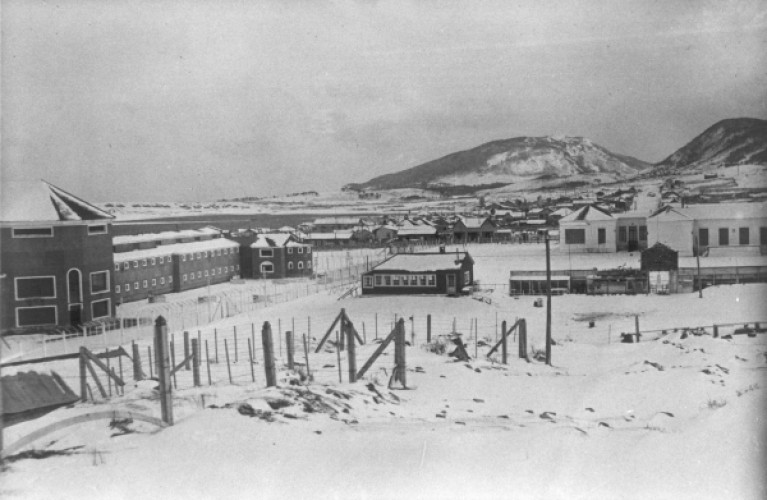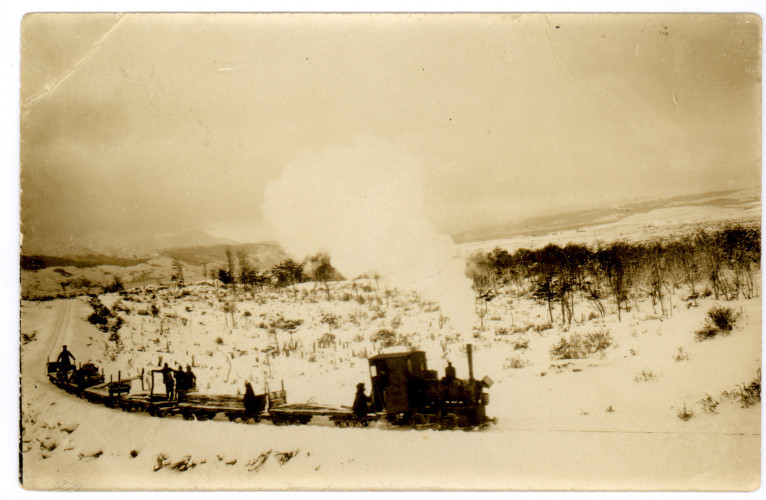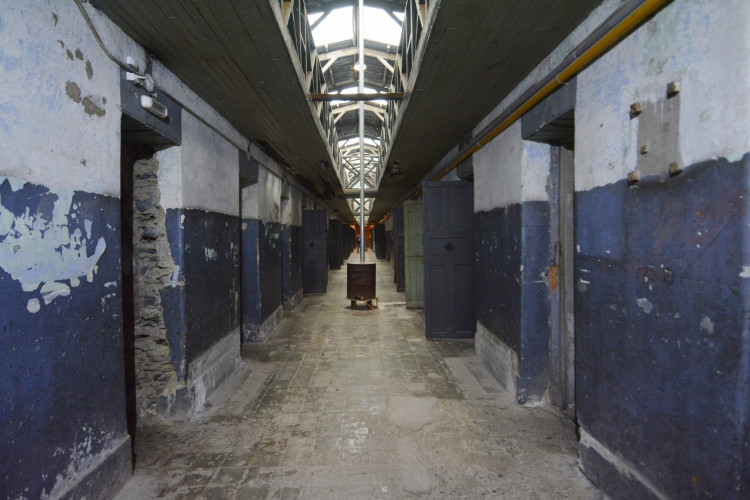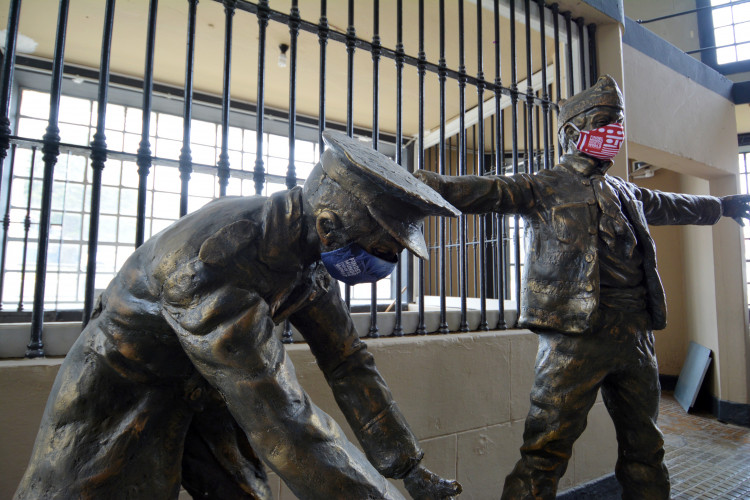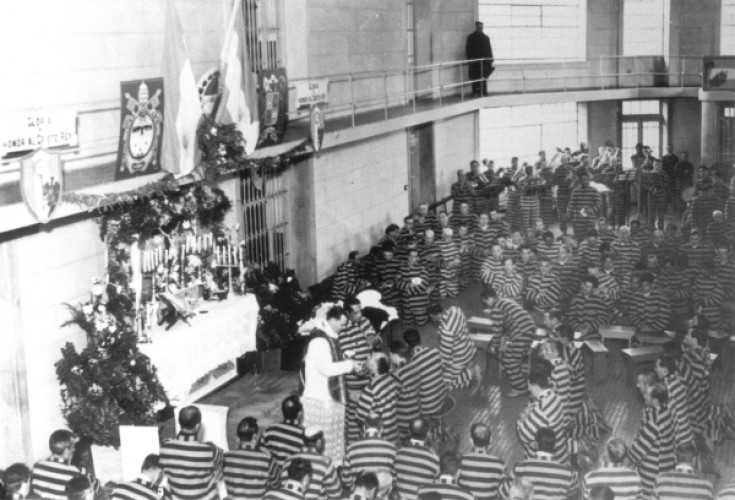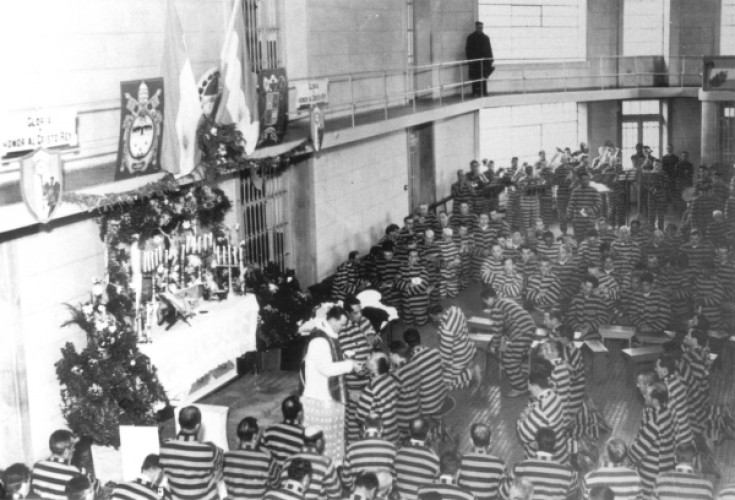The prison of the end of the world
Discover the events and characters that were part of the history of this prison, nowadays turned into a museum.
The first prison that was built in Tierra del Fuego was a military prison located in Isla de los Estados (Staten Island). It was initially situated in San Juan de Salvamento and later in Puerto Cook. The harsh living conditions in this prison, combined with the inclemency of an island battered by sub-Antarctic storms, caused a riot in 1902. This triggered the National Government's decision to move the Military Prison to Puerto Golondrina, west of Ushuaia.
At the same time, during that same year, the construction of the prison for civilians began in Ushuaia, then called Presidio Nacional. Catello Muratgia, an Italian engineer, was in charge of designing the building following the panoptic model, which was intended to facilitate surveillance.
Built with the labor of the prisoners themselves, stone and masonry were used for the construction. When the work was completed in 1911, the prison immediately stood out in the small town of wooden houses. It was an impressive stone mass with five 75-meter long pavilions, arranged in a radial shape, which converged in a polygonal enclosure. Each pavilion had two floors and housed a total of 76 cells each. At their ends, the wings culminated in a 12-meter-long architectural hammer where the bathrooms were located. Outside the main building, other quarters were built for the chapel, infirmary, workshops and administration.
Once the construction works were finished, in 1911 the National Government decided to merge the military prison with the civilian one, and thus the Military Prison and Prison of Recidivists of Ushuaia was born.
The Argentinian Siberia
The National Government's plan to establish a penal colony in Tierra del Fuego tried to emulate what England had done in Australia. The aim was to eliminate the dangerous members of society, confining them in a remote place and, at the same time, using them as a labor force for the development of that particular territory.
The profile of those who were sent to the island included those convicted of theft and fraud, military personnel who had been deported for non-compliance with their duties or desertion, and murderers. The most famous of these was Cayetano Santos Godino, nicknamed "El Petiso Orejudo” (the big-eared shorty), a young son of Italian immigrants who killed four children and was accused of seven other attempted murders and deliberate arsons. Other notorious prisoners were the Russian-born anarchist Simón Radowitsky, accused of murdering Commissioner Falcón and his secretary with a bomb, and Mateo Banks, of Irish descendence, who murdered eight people in the town of Azul, province of Buenos Aires.
The prisoners arrived in Ushuaia by boat, with shackles on their ankles and guarded by a group of soldiers. The freezing climate, the solitude of the places, and the punitive system to which they were subjected inside the prison led Tierra del Fuego to be called "the Argentine Siberia" and "the cursed land".
The journalist Aníbal de Ríe, in his report published in 1933, describes Ushuaia and its prison in these words:
"Everything is sullen, desolate and tremendously sad! To the north, covering an area of three square blocks, built on a stone base one meter high, stands the Presidio. It is not surrounded by huge walls dotted with sentry boxes, like most prisons, but by a fence of woven wire three inches thick, six feet high, topped by four strands of barbed wire laid horizontally. In front of the access gate is the main checkpoint. At the entrance, on the left side, is the guard room overlooking a huge hall that serves as a waiting room, at the back of which a creepy door, secured by a huge sliding bolt, shows thick black-painted iron bars. ¡Up to there, freedom and life: one step further, desolation, the cell! ¡Niches as cold as tombs!"
Indeed the cells, with their stone walls and floors and a tiny grilled opening about 20 centimeters square, resembled a funereal niche, especially on long winter nights when the darkness extended for more than 15 hours.
In the 1930s, the so-called "political prisoners" arrived in Ushuaia, a group of intellectuals and leftists who had been "confined" on the island as punishment for their ideology. However, these men would not be confined in prison with the common prisoners but would be housed in the town, in the homes of Fuegian families. From their experiences in Tierra del Fuego, books such as "Archipiélago" by Ricardo Rojas and "Paralelo 55" by Víctor J. Guillot were to be written.
The daily routine of the prisoners was marked by hard work and strict vigilance. One of the tasks they had to perform was to supply the prison and the town with firewood, for which they would march along a path that led to the area of the Pipo River. There the prisoners spent hours cutting lenga logs with heavy axes, and then loaded the firewood aboard a steam train. When the work was finished, the prisoners returned to the prison on foot, following the railroad.
Today, the End of the World Train reenacts part of this historic journey for visitors. The prison continued to operate for several years despite protests from some sectors regarding the inhumane treatment of prisoners and the frequency of deaths that occurred as a result of punishment and torture.
In 1947, during the government of President Juan Domingo Perón, the permanent shut down of the Ushuaia prison was ordered. The facilities were transferred to the Navy and in 1997, the Museum of the Prison was officially opened, which continues to this days preserving this dramatic chapter of the history of Tierra del Fuego.
The prison of the end of the world
Discover the events and characters that were part of the history of this prison, nowadays turned into a museum.
The first prison that was built in Tierra del Fuego was a military prison located in Isla de los Estados (Staten Island). It was initially situated in San Juan de Salvamento and later in Puerto Cook. The harsh living conditions in this prison, combined with the inclemency of an island battered by sub-Antarctic storms, caused a riot in 1902. This triggered the National Government's decision to move the Military Prison to Puerto Golondrina, west of Ushuaia.
At the same time, during that same year, the construction of the prison for civilians began in Ushuaia, then called Presidio Nacional. Catello Muratgia, an Italian engineer, was in charge of designing the building following the panoptic model, which was intended to facilitate surveillance.
Built with the labor of the prisoners themselves, stone and masonry were used for the construction. When the work was completed in 1911, the prison immediately stood out in the small town of wooden houses. It was an impressive stone mass with five 75-meter long pavilions, arranged in a radial shape, which converged in a polygonal enclosure. Each pavilion had two floors and housed a total of 76 cells each. At their ends, the wings culminated in a 12-meter-long architectural hammer where the bathrooms were located. Outside the main building, other quarters were built for the chapel, infirmary, workshops and administration.
Once the construction works were finished, in 1911 the National Government decided to merge the military prison with the civilian one, and thus the Military Prison and Prison of Recidivists of Ushuaia was born.
The Argentinian Siberia
The National Government's plan to establish a penal colony in Tierra del Fuego tried to emulate what England had done in Australia. The aim was to eliminate the dangerous members of society, confining them in a remote place and, at the same time, using them as a labor force for the development of that particular territory.
The profile of those who were sent to the island included those convicted of theft and fraud, military personnel who had been deported for non-compliance with their duties or desertion, and murderers. The most famous of these was Cayetano Santos Godino, nicknamed "El Petiso Orejudo” (the big-eared shorty), a young son of Italian immigrants who killed four children and was accused of seven other attempted murders and deliberate arsons. Other notorious prisoners were the Russian-born anarchist Simón Radowitsky, accused of murdering Commissioner Falcón and his secretary with a bomb, and Mateo Banks, of Irish descendence, who murdered eight people in the town of Azul, province of Buenos Aires.
The prisoners arrived in Ushuaia by boat, with shackles on their ankles and guarded by a group of soldiers. The freezing climate, the solitude of the places, and the punitive system to which they were subjected inside the prison led Tierra del Fuego to be called "the Argentine Siberia" and "the cursed land".
The journalist Aníbal de Ríe, in his report published in 1933, describes Ushuaia and its prison in these words:
"Everything is sullen, desolate and tremendously sad! To the north, covering an area of three square blocks, built on a stone base one meter high, stands the Presidio. It is not surrounded by huge walls dotted with sentry boxes, like most prisons, but by a fence of woven wire three inches thick, six feet high, topped by four strands of barbed wire laid horizontally. In front of the access gate is the main checkpoint. At the entrance, on the left side, is the guard room overlooking a huge hall that serves as a waiting room, at the back of which a creepy door, secured by a huge sliding bolt, shows thick black-painted iron bars. ¡Up to there, freedom and life: one step further, desolation, the cell! ¡Niches as cold as tombs!"
Indeed the cells, with their stone walls and floors and a tiny grilled opening about 20 centimeters square, resembled a funereal niche, especially on long winter nights when the darkness extended for more than 15 hours.
In the 1930s, the so-called "political prisoners" arrived in Ushuaia, a group of intellectuals and leftists who had been "confined" on the island as punishment for their ideology. However, these men would not be confined in prison with the common prisoners but would be housed in the town, in the homes of Fuegian families. From their experiences in Tierra del Fuego, books such as "Archipiélago" by Ricardo Rojas and "Paralelo 55" by Víctor J. Guillot were to be written.
The daily routine of the prisoners was marked by hard work and strict vigilance. One of the tasks they had to perform was to supply the prison and the town with firewood, for which they would march along a path that led to the area of the Pipo River. There the prisoners spent hours cutting lenga logs with heavy axes, and then loaded the firewood aboard a steam train. When the work was finished, the prisoners returned to the prison on foot, following the railroad.
Today, the End of the World Train reenacts part of this historic journey for visitors. The prison continued to operate for several years despite protests from some sectors regarding the inhumane treatment of prisoners and the frequency of deaths that occurred as a result of punishment and torture.
In 1947, during the government of President Juan Domingo Perón, the permanent shut down of the Ushuaia prison was ordered. The facilities were transferred to the Navy and in 1997, the Museum of the Prison was officially opened, which continues to this days preserving this dramatic chapter of the history of Tierra del Fuego.

